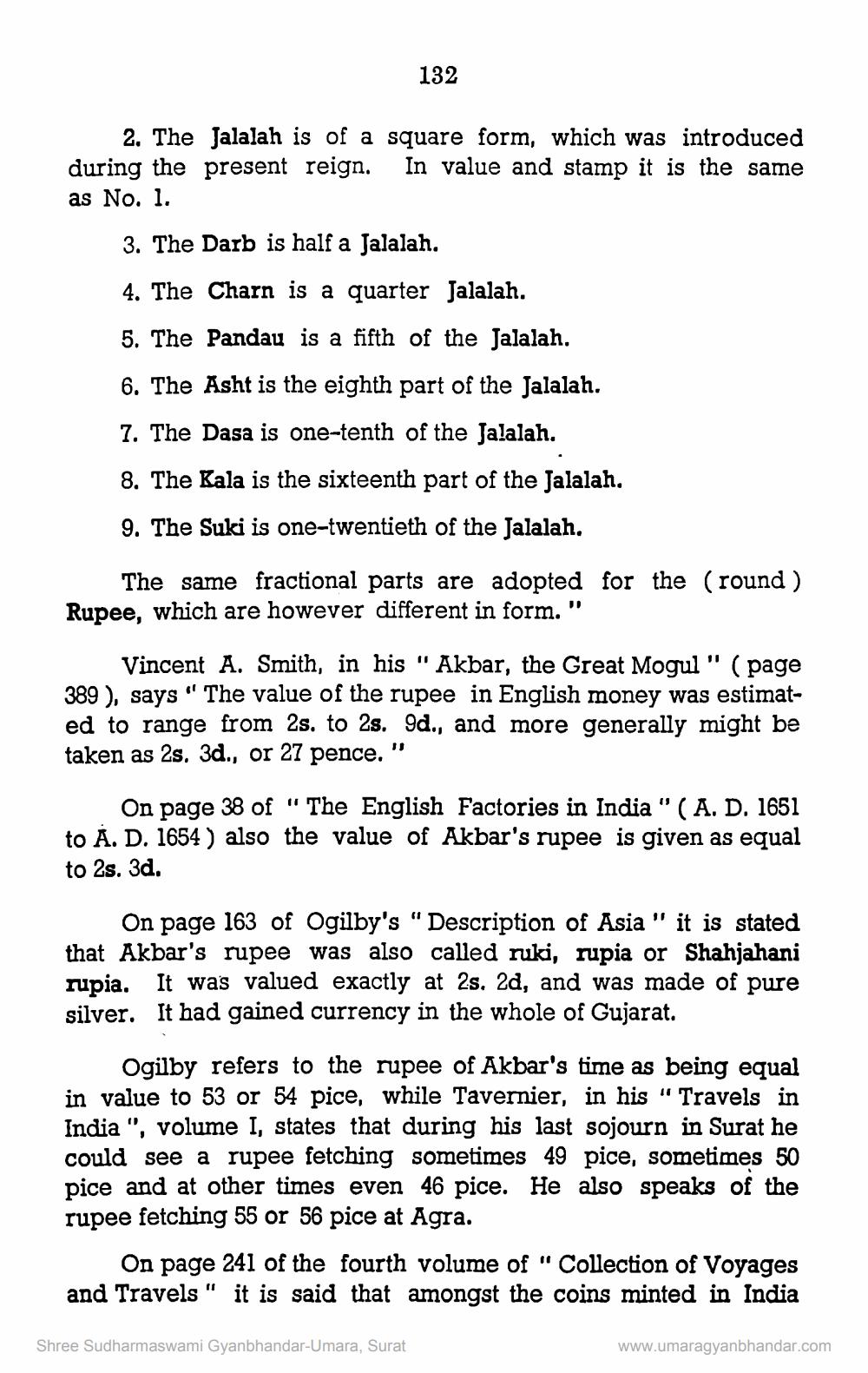________________
132
2. The Jalalah is of a square form, which was introduced during the present reign. In value and stamp it is the same as No. 1.
3. The Darb is half a Jalalah. 4. The Charn is a quarter Jalalah. 5. The Pandau is a fifth of the Jalalah. 6. The Asht is the eighth part of the Jalalah. 7. The Dasa is one-tenth of the Jalalah. 8. The Kala is the sixteenth part of the Jalalah. 9. The Suki is one-twentieth of the Jalalah.
The same fractional parts are adopted for the (round) Rupee, which are however different in form."
Vincent A. Smith, in his " Akbar, the Great Mogul" ( page 389), says "The value of the rupee in English money was estimated to range from 2s. to 25. 9d., and more generally might be taken as 2s. 3d., or 27 pence."
On page 38 of "The English Factories in India" (A. D. 1651 to A. D. 1654 ) also the value of Akbar's rupee is given as equal to 2s. 3d.
On page 163 of Ogilby's " Description of Asia " it is stated that Akbar's rupee was also called ruki, rupia or Shahjahani rupia. It was valued exactly at 2s. 2d, and was made of pure silver. It had gained currency in the whole of Gujarat.
Ogilby refers to the rupee of Akbar's time as being equal in value to 53 or 54 pice, while Tavernier, in his " Travels in India", volume I, states that during his last sojourn in Surat he could see a rupee fetching sometimes 49 pice, sometimes 50 pice and at other times even 46 pice. He also speaks of the rupee fetching 55 or 56 pice at Agra.
On page 241 of the fourth volume of " Collection of Voyages and Travels" it is said that amongst the coins minted in India
Shree Sudharmaswami Gyanbhandar-Umara, Surat
www.umaragyanbhandar.com




